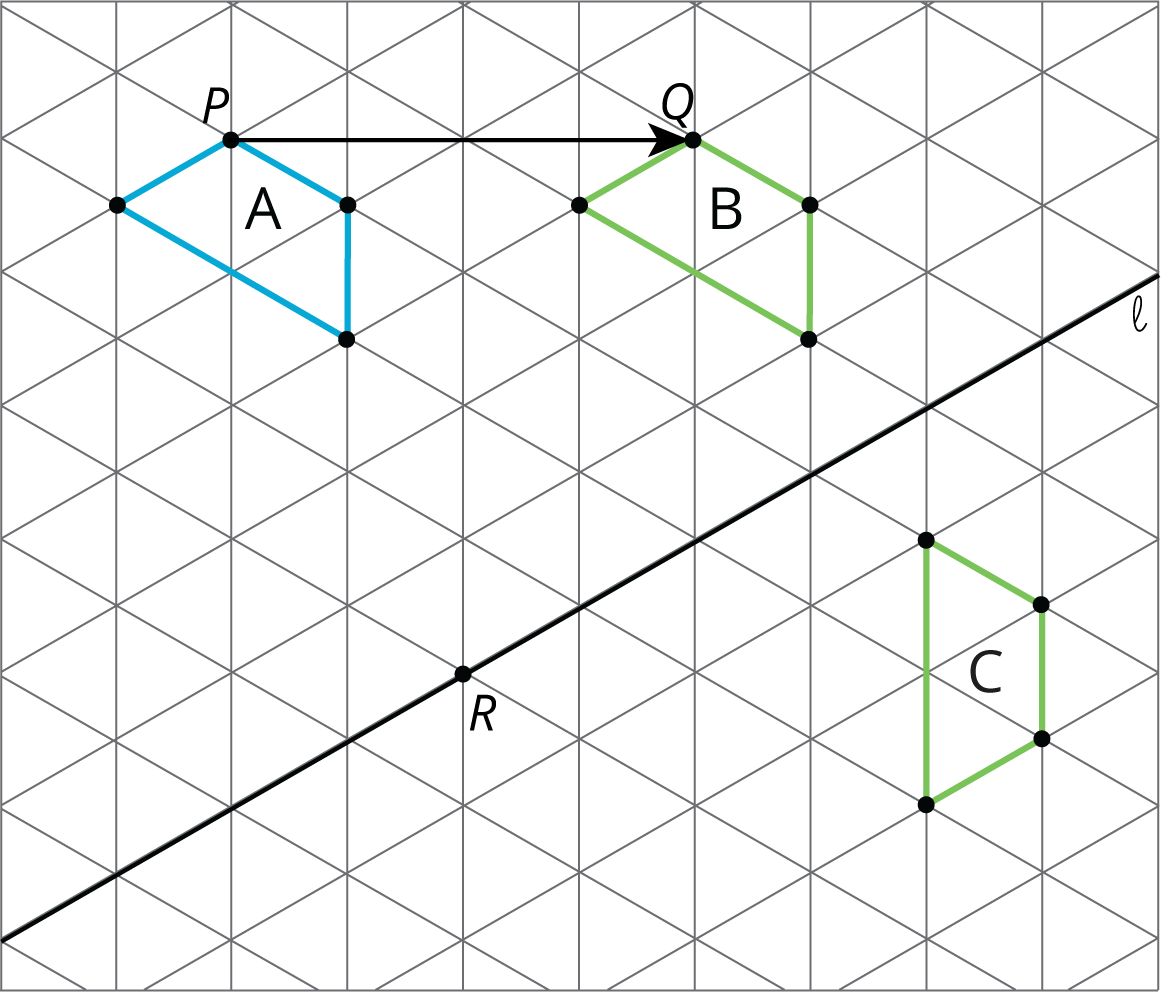Lesson 4
Making the Moves
Lesson Narrative
In the previous lesson, students were introduced to the terms “translation,” “rotation,” and “reflection.” In this lesson, students understand that:
- A translation is determined by two points that specify the distance and direction of the translation.
- A rotation is determined by a point, angle of rotation, and a direction of rotation.
- A reflection is determined by a line.
These moves are called transformations for the first time and students draw images of figures under these transformations. They also study where shapes go under sequences of these transformations and identify the steps in a sequence of transformations that takes one figure to another. Note the subtle shift in language. In the previous lesson, one shape “moves” to the other shape—it is as if the original shape has agency and does the moving. In this lesson, the transformation “takes” one shape to the other shape—this language choice centers the transformation itself as an object of study.
Students using the print version may make use of tracing paper to experiment moving shapes. Students using the digital version have access to geogebra applets with which to perform transformations. Whenever students choose to make use of an appropriate tool, they are engaging in MP5. Students are also likely starting to begin thinking strategically about which transformations will take one figure to another, identifying properties of the shapes that indicate whether a translation, rotation, reflection or sequence of these will achieve this goal (MP7).
Learning Goals
Teacher Facing
- Comprehend that a “transformation” is a translation, rotation, reflection, or a combination of these.
- Draw a transformation of a figure using information given orally.
- Explain (orally) the “sequence of transformations” that “takes” one figure to its image.
- Identify (orally and in writing) the features that determine a translation, rotation, or reflection.
Student Facing
Let’s draw and describe translations, rotations, and reflections.
Required Materials
Required Preparation
Print and cut up cards from the Make that Move blackline master. Prepare 1 set of cards for every 4 students.
Learning Targets
Student Facing
- I can use the terms translation, rotation, and reflection to precisely describe transformations.
CCSS Standards
Addressing
Glossary Entries
-
sequence of transformations
A sequence of transformations is a set of translations, rotations, reflections, and dilations on a figure. The transformations are performed in a given order.
This diagram shows a sequence of transformations to move Figure A to Figure C.
First, A is translated to the right to make B. Next, B is reflected across line \(\ell\) to make C.

-
transformation
A transformation is a translation, rotation, reflection, or dilation, or a combination of these.
Print Formatted Materials
For access, consult one of our IM Certified Partners.
Additional Resources
| Google Slides | For access, consult one of our IM Certified Partners. |
|
| PowerPoint Slides | For access, consult one of our IM Certified Partners. |